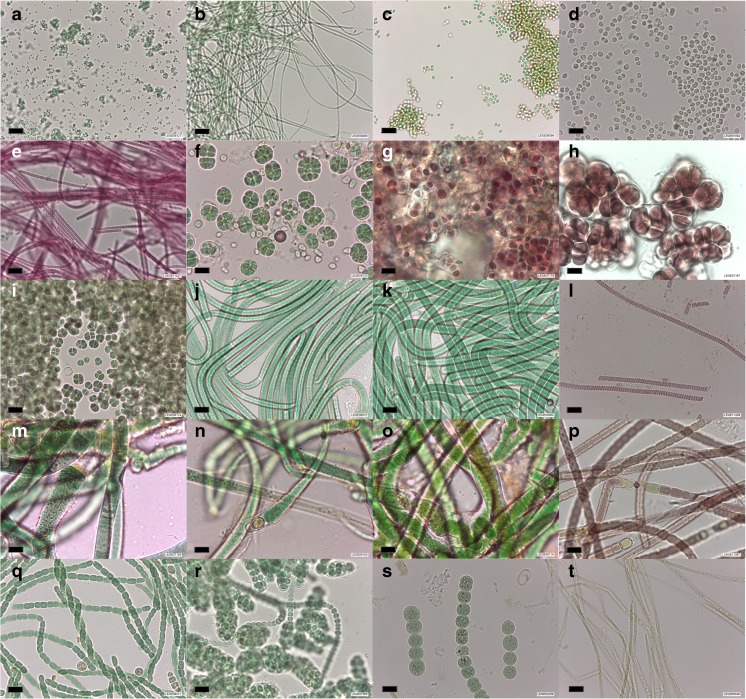Fig. 2.
Example of morphological diversity among cyanobacterial strains from LEGE CC. Strains belong to the orders: a–b Synechococcales, c–e Chroococcales, f Chroococcidiopsidales, g–i Pleurocapsales, j–l Oscillatoriales, and m–t Nostocales. Identifications are as follows: a Cyanobium sp. LEGE 06127; b Nodosilinea sp. LEGE 06069; c Synechocystis salina LEGE 06099; d Microcystis aeruginosa LEGE 91094, a microcystin producer strain highly used in the literature (see also Fig. 3); e unidentified filamentous Chroococcales LEGE 11427; f Gloeocapsopsis crepidinum LEGE 06123; g Hyella patelloides LEGE 07179; h Chroococcopsis sp. LEGE 07187; i Chroococcidiopsis sp. LEGE 06174; j cf. Oxynema acuminatum LEGE 06072; k Phormidium sp. LEGE 00064; l cf. Spirulina sp. LEGE 11439; m Rivularia sp. LEGE 07159; n Calothrix sp. LEGE 06100; o Plectonema cf. radiosum LEGE 06114; p Tolypothrix sp. LEGE 11397; q Nodularia sp. LEGE 06071; r Nostoc sp. LEGE 07365; s Dolichospermum flosaquae LEGE 04289, an anatoxin-a producer strain; t Cylindrospermopsis raciborskii LEGE 95046, a non-cylindrospermopsin producer often used in the literature (see also Fig. 3). Scale bars represent 10 μm

